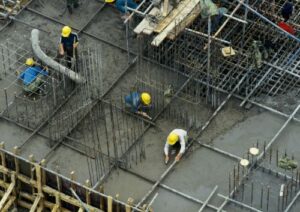Construction sites are a hub of activity, bustling with machinery, workers, and various tasks aimed at creating impressive structures. While these sites play a crucial role in building the communities we live in, they also pose significant risks to the safety and well-being of those who work on them. In Montgomery County, Pennsylvania, the construction industry is a vital part of the local economy. However, to ensure the safety of workers and prevent accidents, it is essential to understand how Occupational Safety and Health Administration (OSHA) standards apply to construction sites and their specific requirements.
OSHA: A Brief Overview
The Occupational Safety and Health Administration (OSHA) is a federal agency that falls under the United States Department of Labor. Its primary mission is to ensure safe and healthy working conditions for employees across various industries, including construction. OSHA sets and enforces standards that are designed to protect workers from potential hazards on the job.
For construction sites, OSHA standards cover a wide range of topics, from scaffolding and fall protection to hazard communication and personal protective equipment (PPE). These standards are designed to reduce the likelihood of accidents, injuries, and fatalities by establishing clear guidelines that employers and workers must follow.
Applying OSHA Standards to Montgomery County, Pennsylvania Construction Sites
In Montgomery County, Pennsylvania, construction is a booming industry, contributing to the growth and development of the region. With numerous ongoing projects, it becomes crucial to ensure that OSHA standards are not only understood but also diligently implemented to safeguard the well-being of the workers.
- Fall Protection: Falls are one of the leading causes of construction-related injuries and fatalities. OSHA mandates that fall protection measures be in place for any work conducted at heights of six feet or more. This might involve the use of guardrails, safety nets, or personal fall arrest systems (PFAS). Employers are responsible for assessing potential fall hazards and providing the appropriate protective measures.
- Scaffolding Safety: Scaffolding is a common feature on construction sites, allowing workers to access various areas of a building. OSHA’s scaffolding standards dictate requirements for scaffold construction, usage, and inspection. Regular inspections, proper assembly, and adherence to load limits are critical to preventing accidents.
- Excavation and Trenching: The construction industry often involves digging trenches and excavations, which can be hazardous if not properly managed. OSHA standards mandate protective systems, such as shoring, sloping, or trench boxes, to prevent cave-ins and protect workers inside trenches.
- Electrical Safety: Electrical hazards are prevalent on construction sites due to the use of power tools and temporary wiring. OSHA standards require proper grounding, GFCI protection, and safe work practices to minimize the risk of electrical accidents.
- Hazard Communication: Construction sites can expose workers to a variety of hazardous substances. OSHA’s Hazard Communication Standard ensures that workers are informed about the potential dangers of chemicals they might encounter. Proper labeling, safety data sheets, and training are essential components of this standard.
- Personal Protective Equipment (PPE): OSHA mandates the use of appropriate PPE to protect workers from various hazards, including head, eye, and hearing protection, as well as respiratory equipment and high-visibility clothing.
- Recordkeeping and Reporting: Employers are required to maintain accurate records of workplace injuries and illnesses. In the unfortunate event of an accident, prompt reporting to OSHA is essential to ensure appropriate action is taken and future incidents are prevented.
Safety Training and Education
Incorporating OSHA standards into your construction site practices involves more than just adhering to regulations; it requires a comprehensive approach that includes safety training and education. Properly trained workers are better equipped to identify potential hazards, use safety equipment effectively, and respond appropriately in case of emergencies.
- Employee Training: Providing thorough training to your employees is essential for creating a culture of safety. From new hires to experienced workers, everyone should receive training on OSHA standards relevant to their tasks. Training sessions should cover topics such as fall protection, hazard communication, PPE usage, and emergency response procedures.
- Supervisor and Management Training: Effective safety practices start at the top. Supervisors and managers should undergo specialized training to understand their roles in enforcing safety protocols, conducting regular site inspections, and leading by example. Their ability to identify potential hazards and address them promptly can make a significant difference in accident prevention.
- Regular Workshops and Seminars: Hosting workshops and seminars focused on construction safety can be beneficial for keeping workers up to date with the latest OSHA regulations and best practices. These events provide a platform for open discussions, sharing experiences, and learning from real-life scenarios.
- Emergency Preparedness: Accidents can happen despite all precautions. Having a well-defined emergency response plan in place is crucial. Conducting regular drills to simulate various emergency situations can help ensure that workers are well-prepared to respond effectively and minimize potential injuries.
As a construction company operating in Montgomery County, Pennsylvania, adhering to OSHA standards is not just a legal obligation but a moral responsibility. By prioritizing the safety of your workers and implementing OSHA requirements, you create a safer work environment that not only reduces the risk of accidents but also boosts employee morale and productivity.
At McDonald At Law, we understand the complexities of OSHA standards and their application to construction sites. Our team of experienced attorneys is dedicated to helping you navigate these regulations, ensuring compliance, and ultimately safeguarding your business and your workers. Contact us today to learn more about how we can assist you in creating a safer and more secure construction environment.
